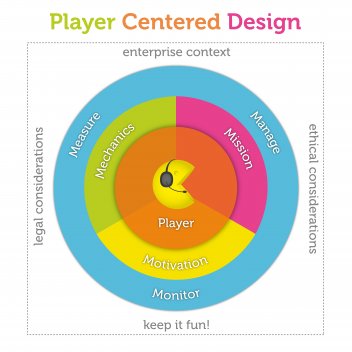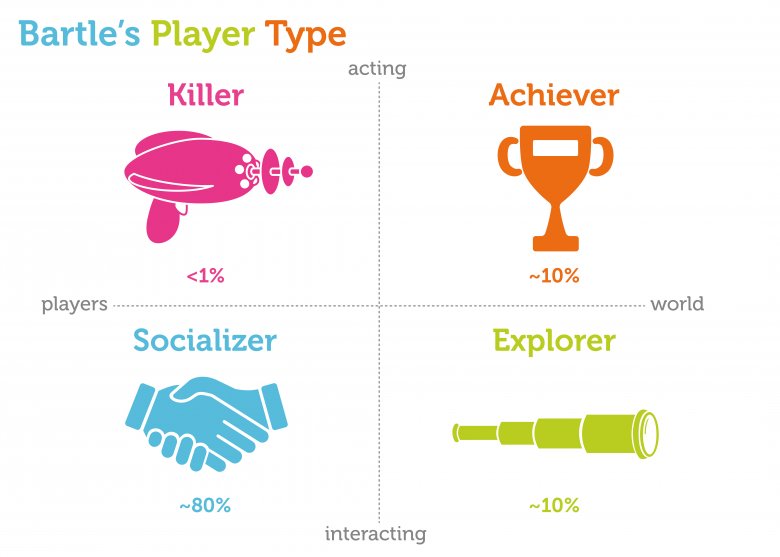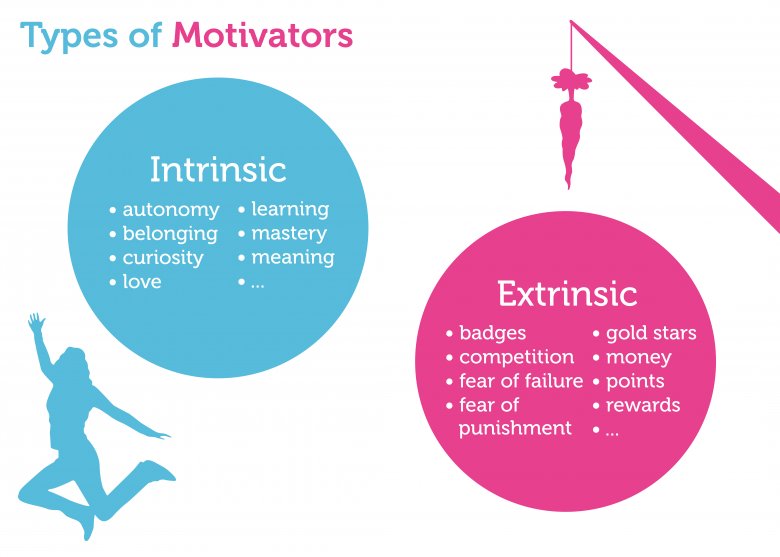
Interaction Design Foundation is about to publish Janaki Mythily Kumar’s and Mario Herger’s 2013 book: “Gamification at Work: Designing Engaging Business Software.” [reference: Kumar, Janaki Mythily and Herger, Mario (2013): Gamification at Work: Designing Engaging Business Software. Aarhus, Denmark, The Interaction Design Foundation. ISBN: 978-87-92964-06-9.]
Kumar and Herger put together history and background of gamification among a broad spectrum of ventures and included a quick guide for how to apply some of the ideas and key concepts to the design of corporate dynamics for your company!
Here are a few gems from the book:

Figure 2.1: Player Centered Design Process. Courtesy of Janaki Kumar and Mario Herger. Copyright: CC-Att-ND (Creative Commons Attribution-NoDerivs 3.0 Unported).

Figure 3.3: Bartle Player Types. Courtesy of Janaki Kumar and Mario Herger. Copyright: CC-Att-ND (Creative Commons Attribution-NoDerivs 3.0 Unported).
If you think of these as user-types, then Kumar and Herger provide a set of ideas of how to design to meet the needs of these different player groups. They provide a great Player Persona Template. In Chapter 4, they explain how to gather the data for a particular company and develop user personas based on actual ethnographic information.
Chapter 5 explores the motivational drivers and even touch up on flow (those who took my class know how that is linked with background knowledge and attention controls). Here’s a nice diagram:

Figure 5.1: Intrinsic and extrinsic motivation. Courtesy of Janaki Kumar and Mario Herger. Copyright: CC-Att-ND (Creative Commons Attribution-NoDerivs 3.0 Unported).
Those who are familiar with Behavioral Economics and Daniel Kahneman’s work will enjoy this visual summary:

Figure 6.16: Game Economy. Courtesy of Janaki Kumar and Mario Herger. Copyright: CC-Att-ND (Creative Commons Attribution-NoDerivs 3.0 Unported).
Chapter 7 provides a list of tips for successful implementation of Kumar’s and Herger’s ideas into the corporate setting. Chapter 8 points out legal and ethical concerns when gamification is used for manipulation.
All together this is a quick and concise work for those interested in but new to gamification, behavioral economics, and conceptual design for social group interactions. Very readable, well illustrated, and fun.
For those who are familiar with my classes and this blog, here are two TED talks on game theory and application. Enjoy!
Tom Chatfield: 7 Ways Games Reward the Brain
Tom Chatfield how to keep players engaged in the product/game through the reward schedule:
- Experience bars measuring progress
- Multiple long and short-term aims
- Rewards for effort (don’t punish failure)
- Rapid, frequent, and clear feedback
- An element of uncertainty (see cognitive science behind gambling)
- Windows of enhanced attention—moments when people are more likely to learn based on context & environmental conditions
- Other people: people want to do things with other people—social component
Seth Priebatsch: The Game Layer on Top of the World
Seth Priebatsch talks about game dynamics and how they can be used to create successful products:
- Appointment Dynamic—to succeed gamers have to do something by a certain time (e.g. happy hour)
- Influence and Status (e.g. levels and badges to distinguish members and membership levels)
- Progression Dynamics (e.g. progress bar and % of completeness toward some reward—think of LinkedIn progress bar on profile completion)
- Communal Discovery—leverage network to solve problem (e.g. get members to source the best news or best stores)


1 comment for “Review: Gamification at Work: Designing Engaging Business Software”